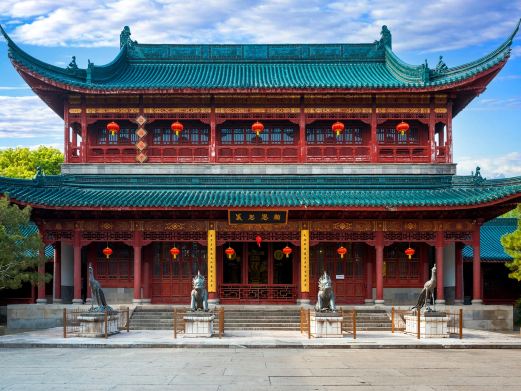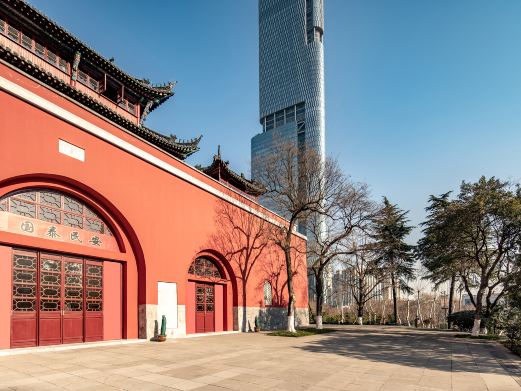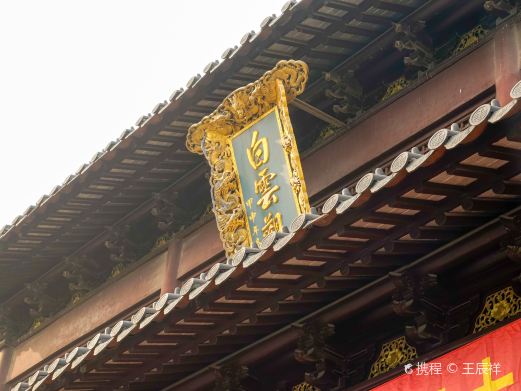Guo Dong Ancient Ecological Village, located 10 kilometers away from Wuyi County, is said to be an ancient village built by the descendants of He Zhizhong, a prime minister from the Song Dynasty, who emulated the ‘Neijingtu’. The village’s layout of bridges and wells follows the terrain with great precision. In terms of scenery, the lush forests and mottled moss of Guo Dong provide a fresh and profound feeling, with few traces of later modifications. Ming and Qing dynasty ancient buildings are everywhere, making it one of the must-visit ancient villages in Wuyi. The first thing that catches the eye upon entering the village is the Huilong Bridge, which features an exquisite pavilion and a plaque hanging with the words ‘Yixiang’. The bridge is covered with green vines, and beneath it flows a murmuring stream, exuding an ancient charm and becoming a favored subject for tourists’ photos. Next to the bridge, at the foot of the mountain, is the Hailian Hall with a statue of Guan Yu and murals in front, and a statue of Guanyin in the rear. If you are advised to burn incense upon entering, you can politely decline if you do not intend to. Behind Hailian Hall, the small mountain is the Longshan Primeval Forest. Although the mountain is only a few hundred meters high, it is home to a large number of precious plants such as southern red fir and bitter chestnut, many of which are ancient trees of five to six hundred years old. Looking through the dense foliage at the continuous eaves and horse-head walls of Guo Dong village below, you can better understand why people say ‘the mountains encircle like a city wall, and the valleys are as deep as a cave’. The air in the forest is excellent; you might take a few deep breaths, feeling very refreshed. Following the trails within the primeval forest for about 30 minutes, you will soon arrive at the Fan Yu Hall (New House Hall) and the Ren Lan Hall. The spandrels and flower windows of Fan Yu Hall are exquisitely carved, yet they possess an extra touch of casualness and unconstraint compared to typical wood carvings. Ren Lan Hall, named after ‘Li Sao’, usually uses eave columns and hanging columns to support the eaves, but here it uses ‘ox leg’ brackets to support the small beams, which is quite unique. The He’s Ancestral Hall contains ninety-seven plaques, but unfortunately, most were severely damaged in the past, and only four, including ‘Respect and Encourage Learning’ and ‘Yizhongru Lin’ from the Daoguang era, are original. The rest are replicas. However, when you step into the hall and look up at the full room of plaques, it is quite impressive. The ancient stage inside the hall is elegant and simple, and the ridges and eaves are also exquisitely decorated. To the east of the He’s Ancestral Hall, you can see a Christian church, and the large hall opposite often gathers villagers for handicrafts and chatting. Many of the mud-walled and tile-roofed houses by the stream exude an ancient charm, suitable for photography. Following the road outside the village, you can reach the Jie Xiao Archway and Wen Chang Pavilion. Guo Dong’s local food and accommodation services are well-developed, with farmhouse standard rooms priced around a hundred yuan, although not many guests stay overnight. The dining is famous for bamboo tube rice and stewed local chicken, which can be found in most restaurants by the village. Especially the bamboo tube rice, which is stuffed with rice, goji berries, and dried vegetables in a bamboo tube, then baked over a fire for an hour, resulting in a fragrant and sticky delicacy. Opening hours: 08:00-17:30 all year round. For preferential policies, please refer to the information disclosed by the scenic spot on the day. Guide services are available within the scenic area.
Guo Dong Ancient Ecological Village
Guo Dong Ancient Ecological Village, located 10 kilometers away from Wuyi County, is said to be an a[...]









